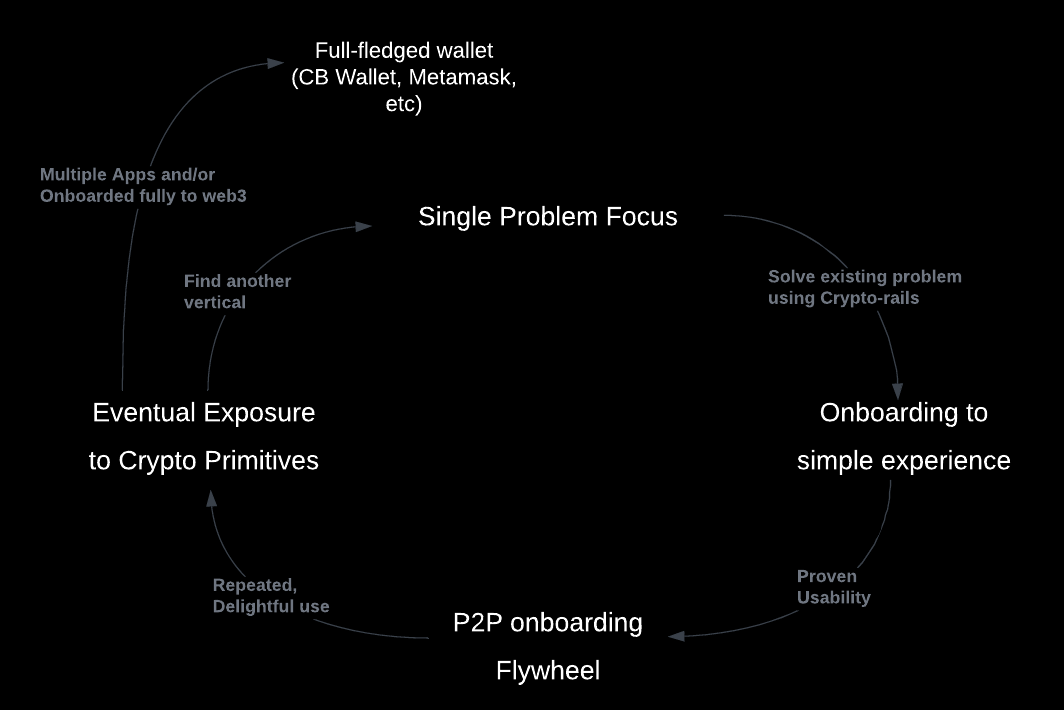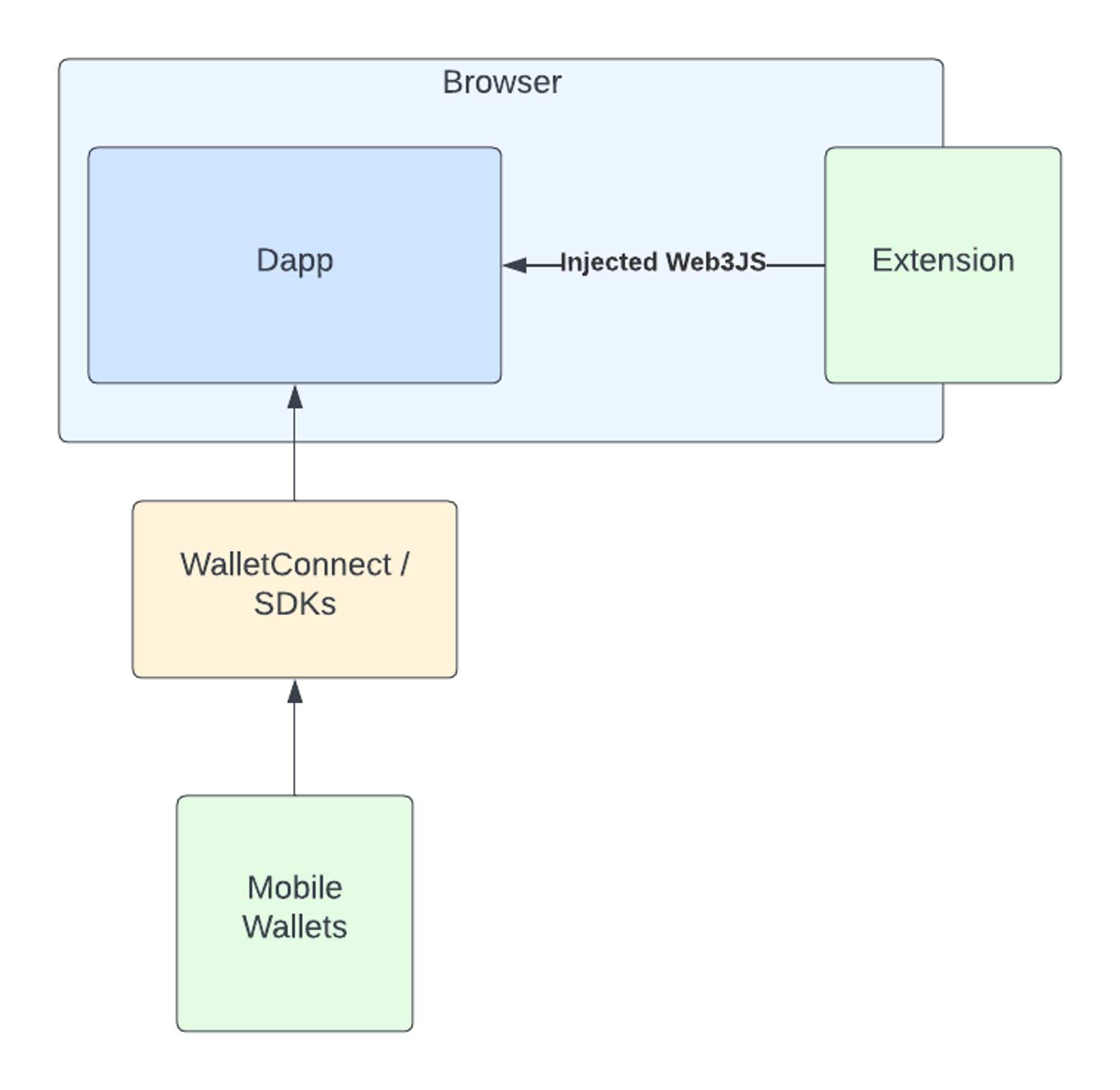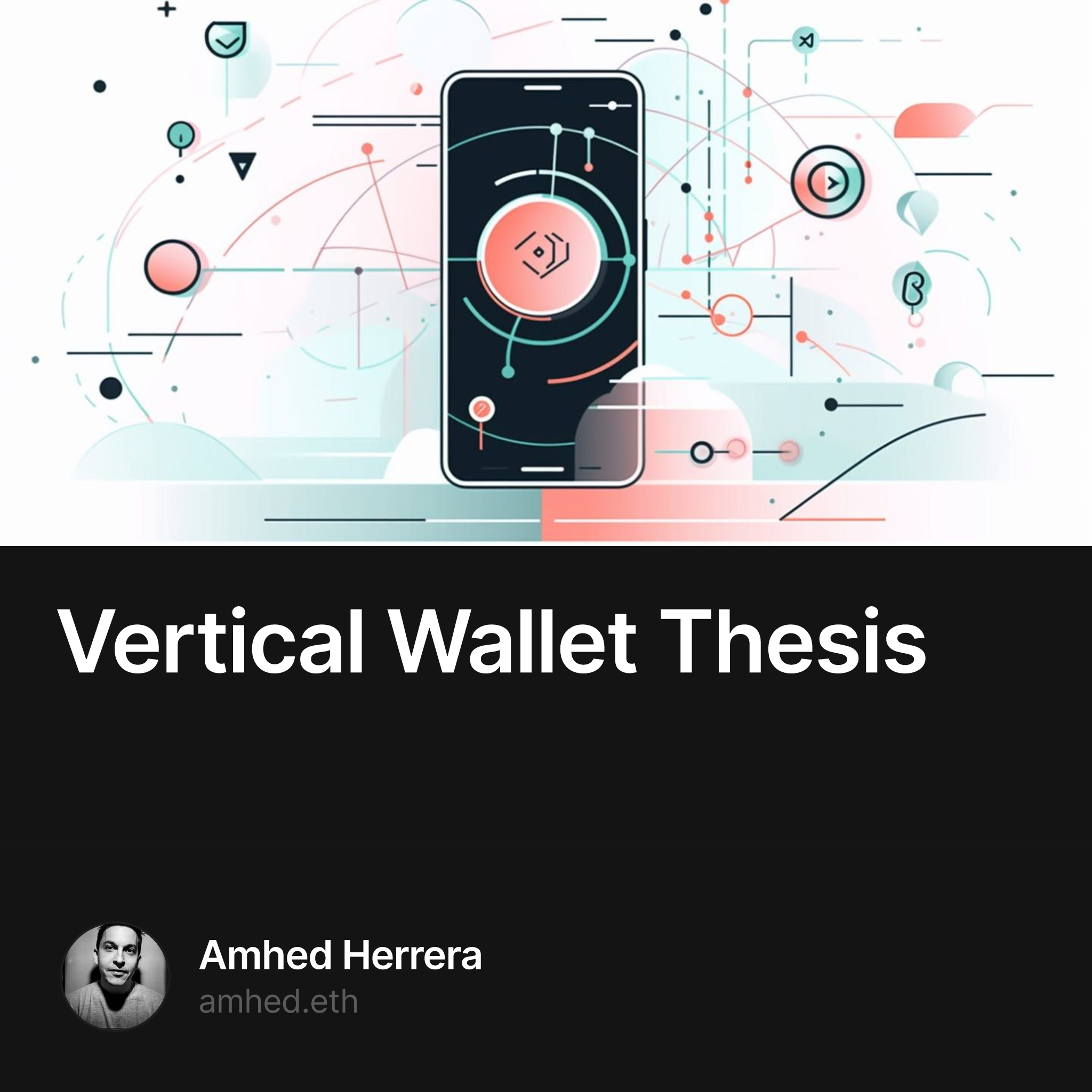I've been thinking about the challenge of onboarding new users into self-custody for a while. And recently read this tweetstorm by Jason Choi that got me thinking how to get there:
This specific part resonated:
11/ Even anecdotally here in Hong Kong, the sheer number of people I've met who were onboarded onto crypto via NFTs but have no idea what Ethereum is (most interactions were on
@solana) was telling to me. The apps are what control onboarding, mindshare; block space is a commodity
I want to elaborate on this point on what I'd like to call the Vertical App Thesis, or more specifically, the vertical wallet thesis.
Over the last few years a lot of friction for self-custody onboarding has disappeared:
-
Key Management: MPC, Smart-Contract wallets, Social Recovery
-
Usernames: ENS subdomains (think [name].argent.xyz and [name].cb.id)
-
Gas fees: Plenty of cheaper alternatives on L2s and “sufficiently-centralized” L1s
-
Signing: If you attended ETH Denver this year you were probably bombarded with talks about Account Abstraction and how it will deliver the next billion users
And yet… 1% of crypto users have (or even know) what self-custody is all about. And apparently that number barely grows every year.
I counted no less than 4 new wallets hitting the market at ETH Denver. All of their marketing focused on the 90% set of features that most current wallets share (and one or two new unproven features) and a heavy focus on the technology: MPC, Native AA, 3D Avatars, Easier Staking, etc.
For users outside of crypto twitter these things make no sense. They don't solve a real world problem and there's no reason to go through the steep learning slope if there's no improvement to their lives at the top of that hill.
Which brings us to the point I wanted to make:
The next wallet to bring in the next 100 million users to Web3 won't even look like a wallet.

The next wallet app will:
-
Solve a specific problem: Hyper-focused on usability / reliability.
-
Tradeoff some level of security for ease of onboarding.
-
Progressively harden user accounts as they learn more about web3, instead of drinking from the firehose.
-
Make it extremely easy to invite + onboard friends in under 20 seconds
-
Eventually expose users to crypto-primitives, and unlock access to full-fledged wallets

What would a “vertical” app look like?
I would expect Ticketmaster to come out with an app that allows you to easily buy, validate, and re-sell tickets for a concert without worrying about whether it's counterfeit. It would not feel like a wallet, even though all actions would happen on-chain.
Seems like they are already experimenting with NFT-based priority queues.
It would look similar to NBA Top Shot and their Web2-OAUTH-Based wallet generation within the browser. We can discuss why that's not great security or if it really counts as a self-custody wallet, but what can't be denied is that IT WORKED. It had great success at onboarding thousands of users during 2021.
It would look like Venmo, on crypto rails. It would have all of the following technical components:
-
Simple UX that allows you to see your balance, send or receive
-
Single-currency (USDC, USDT, or Dai) but denominated in your local currency
-
On an opinionated L2 for low gas fees
-
Account-Abstracted or MPC-based for easy onboarding and recovery
-
ENS-based
But… it wouldn't expose any of that to the end-user, the same way that Venmo doesn't expose the inner workings of the ACH system to consumers.
The focus is on solving specific problems:
-
It's expensive to move money across borders
-
It's difficult to pay friends electronically
-
Small & independent merchants cannot get points of sale
-
Cheaper goods cannot be purchased with credit cards (micro-transactions)
But… this doesn't expose people to Web3!
The next argument is that a “vertical” app is not really a web3 wallet, and that's the point. We thought that DApps where going to solve this problem, but the reality is that they're clunky:
-
Requires installing a wallet + onboarding
-
Requires loading the wallet with gas / purchasing native token for paying for transactions
-
Exposes a new “connecting” mechanism that's akin to logging in with a traditional OAUTH provider (but confusing, as some DApps use both)
-
Depends on brittle connections from a third-party relayer like WalletConnect to coordinate messaging/signing

A better experience would be
-
User onboards to vertical app
-
Logins with OAUTH provider like Google
-
Generates a new MPC wallet using a service like Coinbase Wallet-as-a-Service or turnkey.io
-
Onboards to web3 with an automated cloud backup for private key
-
-
After the user has completed the onboarding journey and satisfied their original problem, we can THEN expose them to full-fledge wallets as the center of their web3 identity
-
Onboard unto full-fledged wallet experiences by sharing app-2-app credentials so the user doesn't have to copy/paste private keys again.
-
Both the vertical app and the full wallet now use the same account

Great, what's next?
We just have to start building. Ping me at @amhedh and let me know what you think.

